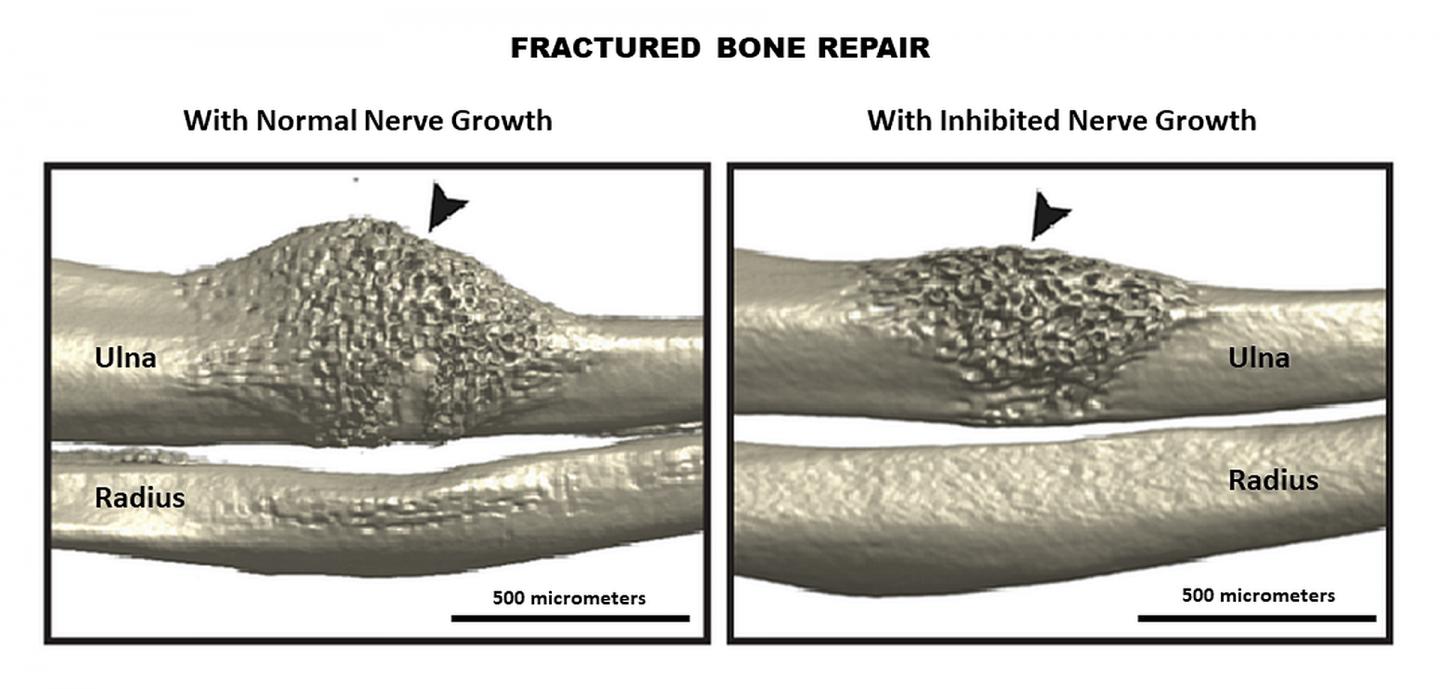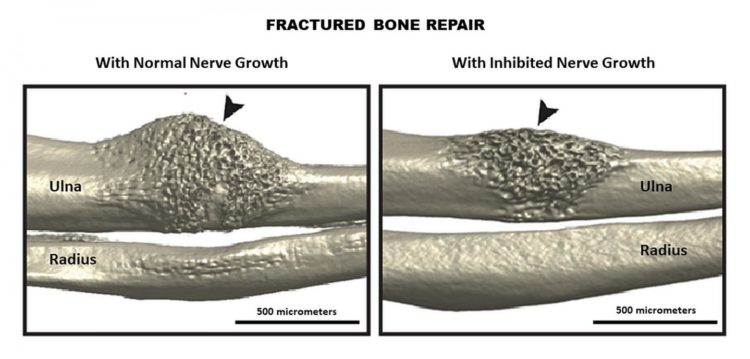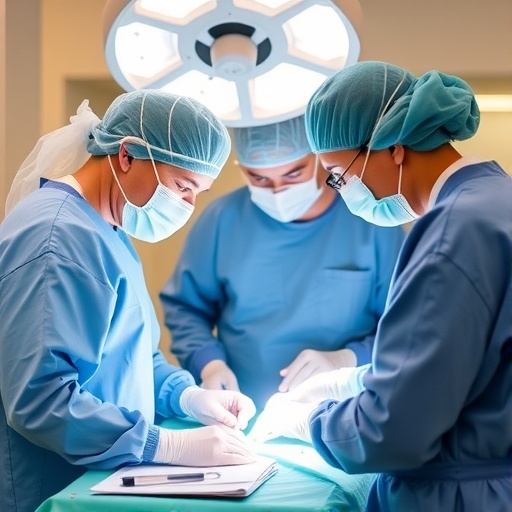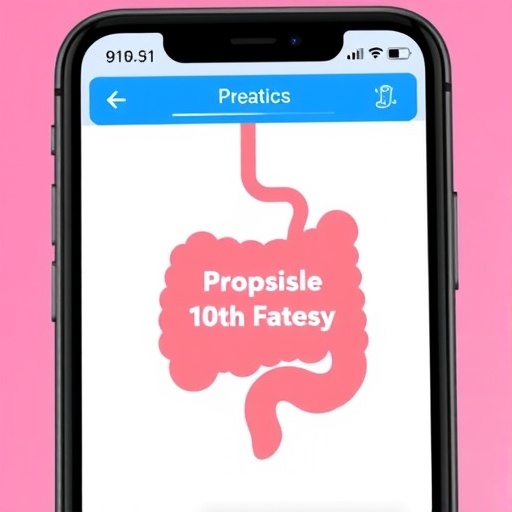
Credit: Seungyong Lee, Ph.D., Johns Hopkins Medicine
Sticks and stones may break one’s bones, but healing them requires the production of a protein signal that stimulates the generation, growth and spread of vital nerve cells, or neurons, throughout the injured area. That’s the finding of a recent Johns Hopkins Medicine study that used mice to demonstrate what likely takes place during human fracture repair as well.
“A better understanding of how nerve cells work in bones could spur the development of neuron regenerating therapies for people with diseases where nerve damage is common, such as diabetic neuropathy,” says Aaron W. James, M.D., Ph.D., associate professor of pathology at the Johns Hopkins University School of Medicine and co-senior author of the study described in the Journal of Clinical Investigation.
“Typically, people with these conditions also have problems with bone repair,” he adds.
Essentially, the scientists say their results in mice demonstrate that, at the fracture point, two proteins — one called tropomyosin receptor kinase-A, or TrkA, and the other known as nerve growth factor, or NGF — bind together to signal the start of innervation, the supplying of nerves, and subsequently, new bone. They say that this process may be similar to the mechanism for human bone repair.
“We showed that when TrkA, and in turn, NGF, were removed from the process, there was a dramatic reduction not only in innervation but also in the three follow-up activities critical to successful recovery from a fracture: blood vessel formation, production of bone-synthesizing cells and mineralization of new bone,” says James. “In fact, the drop overall in these indicators of bone repair was between 60% and 80%.”
First identified in the 1950s, NGF is now known to direct the growth, maintenance, proliferation and preservation of neurons throughout the body. It also helps neurons alert the brain when tissues, including bones, are experiencing pain from injury or disease. Studying this connection, James says, is what led researchers to suspect that NGF also might play a key role in skeletal repair.
“When drug companies in recent years developed and conducted human trials of anti-NGF agents to reduce pain from arthritis and other disorders, they found that a number of patients suffered unusual bone fractures,” says Johns Hopkins researcher and co-senior author Thomas Clemens, Ph.D. “Other studies around the same time showed that the bones of children with a rare genetic mutation preventing the production of TrkA may not heal well after injury, suggesting a connection between this signaling pathway and bone repair mechanisms.”
A 2016 study conducted by Clemens and others provided some of the first evidence that NGF promotes the ingrowth of nerves during the development of long bones in a mouse, and that without it, proper bone formation is hampered. The current study was designed to better define how NGF-TrkA signaling might be involved.
To accomplish this, James, Clemens and their colleagues studied mice with stress fractures of the ulna, the forelimb bone equivalent to the thinner and longer of the two bones in the human arm.
For their experimental groups, the researchers used two different methods to block neural ingrowth during repair. One group of mice were genetically bred not to respond to TrkA and given a drug that inactivates chemical signaling by the protein. The second group of mice were given a drug that kills the nerve fibers.
“Among the mice lacking TrkA signaling, there was a significant reduction — as much as 80% compared with a control group of normal functioning mice — in the number of nerve fibers that appeared at the fracture site,” James says. “We also saw fewer osteoblasts [bone-producing cells] and in turn, less mineralization of new bone.”
“These results indicate that fracture repair is truly dependent on the neural signaling directed by TrkA-expressing nerve fibers,” he explains.
The researchers next plan to study how the NGF-TrkA signaling pathway and the resulting skeletal repair process respond when dealing with the removal of a bone segment, rather than just a break.
“This will help us learn if the signaling we linked to bone repair in mice controls that process for larger or more extensive injuries in a way similar to what we observed in small stress fractures,” Clemens says.
###
Along with James and Clemens, the other members of the research team from the Johns Hopkins University School of Medicine are lead author Zhu Li, Ph.D.; Carolyn Meyers; Leslie Chang, M.D.; Seungyong Lee, Ph.D.; and Ahmet Hoke, M.D., Ph.D. The team also includes Zhi Li, of the Baltimore Veterans Affairs Medical Center, and Ryan Tomlinson, Ph.D., of Thomas Jefferson University in Philadelphia.
Funding for the study was provided by the National Institutes of Health’s National Institute of Arthritis and Musculoskeletal and Skin Diseases (Grants R01 AR070773, K08 AR068316 and R01 AR068934), the National Institutes of Health’s National Institute of Dental and Craniofacial Research (Grant R21 DE027922), the Department of Defense, the American Cancer Society Research Scholar Grant, the Maryland Stem Cell Research Foundation, the Musculoskeletal Transplant Foundation, the Veterans Affairs Merit Award, and the Senior Research Career Scientist Award.
Media Contact
Michael E. Newman
[email protected]
410-502-9463
Original Source
https:/





